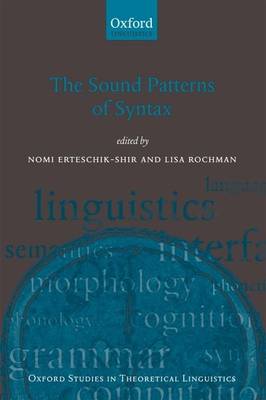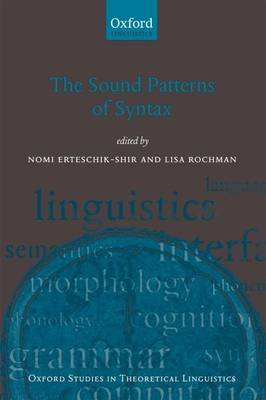
Door een staking bij bpost kan je online bestelling op dit moment iets langer onderweg zijn dan voorzien. Dringend iets nodig? Onze winkels ontvangen jou met open armen!
- Afhalen na 1 uur in een winkel met voorraad
- Gratis thuislevering in België vanaf € 30
- Ruim aanbod met 7 miljoen producten
Door een staking bij bpost kan je online bestelling op dit moment iets langer onderweg zijn dan voorzien. Dringend iets nodig? Onze winkels ontvangen jou met open armen!
- Afhalen na 1 uur in een winkel met voorraad
- Gratis thuislevering in België vanaf € 30
- Ruim aanbod met 7 miljoen producten
Zoeken
Omschrijving
In this book leading scholars address the issues surrounding the syntax-phonology interface. These principally concern whether the phonological component can influence syntax and if so how far and in what ways: such questions are a prominent component of current work on the biolinguistics of speech production and reception. The problematic relationship between syntax and phonology has long piqued the interest of syntacticians and phonologists: the connections between sound and structure have played a key role in generative grammar from its inception, initially relating to focus and the prosodic marking of constituent structure and more recently to word-order constraints. This book advances this work in a series of critical and interlinked presentations of the latest thinking and research. In doing so it draws on data from a wide range of languages, evidence from disordered language, and related work in language acquisition.
Specificaties
Betrokkenen
- Auteur(s):
- Uitgeverij:
Inhoud
- Aantal bladzijden:
- 352
- Taal:
- Engels
- Reeks:
Eigenschappen
- Productcode (EAN):
- 9780199556878
- Verschijningsdatum:
- 12/03/2010
- Uitvoering:
- Paperback
- Formaat:
- Trade paperback (VS)
- Afmetingen:
- 229 mm x 155 mm
- Gewicht:
- 612 g

Alleen bij Standaard Boekhandel
+ 159 punten op je klantenkaart van Standaard Boekhandel
Beoordelingen
We publiceren alleen reviews die voldoen aan de voorwaarden voor reviews. Bekijk onze voorwaarden voor reviews.











